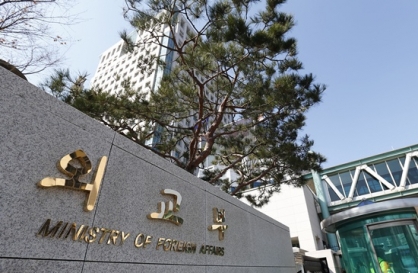One of the greatest ironies of the 2012 presidential campaigns was that both candidates framed the U.S. as a champion of free trade under assault from malevolent “cheaters.” In fact, the U.S. is basically the world’s biggest loner.
Trade accounted for about 29.2 percent of U.S. economic activity in 2010. That makes the U.S. the most closed of all developed nations according to “trade intensity,” which is calculated as the sum of exports and imports, divided by gross domestic product.
Only one other developed nation came close: Japan, whose domestic markets have long been seen as practically impenetrable to foreign companies. Every other major economic power has nearly double the trade intensity of the U.S.
Standard measures of trade intensity, if anything, probably understate the degree to which the U.S. is a closed economy. A recent study by the Federal Reserve Bank of San Francisco suggests that the Bureau of Economic Analysis overvalues the value of imports by 36 percent by ignoring domestic value-added in transport, marketing and retail.
The U.S. has made some progress toward a more open economy over the last half century. (In 1960, trade was less than a 10th of all GDP.) But with the European Union’s economic integration and the rise of East Asia in global trade, the rest of the world has moved far more quickly into a single market.
Why does the U.S. have such a closed economy?
Geography is an influential factor. The U.S.’s large interior reduces the competitiveness of foreign imports. It also means that many of the U.S.’s economic needs can be served by its own sources of supply, whereas domestic scarcities compel smaller nations into global markets. Geography is important in another way: The U.S. has only two land borders and is separated by two oceans from the rest of the global economy, which limits access for foreign importers and U.S. exporters.
The U.S.’s transportation infrastructure also plays a part. Compared to the rest of the world, the U.S. relies heavily on overland forms of commercial transport ― interstate highway trucking and freight railways. While this transportation system is to a large degree the result of geography, it has a compounding impact on openness, giving a cost advantage to goods already in the overland network relative to foreign goods, which largely arrive by sea. Conversely, inexpensive overland transport makes production for the domestic market a more-attractive proposition for U.S. firms than exporting.
The size of the U.S. economy further contributes to its isolation. Economic exchanges within large markets such as the U.S. are substantially more likely than exchanges within smaller national economies. The higher likelihood of purchasing goods produced within one’s own country rather than from abroad, a phenomenon economists call “home bias” in consumption, may also be more powerful or have more opportunities to affect trade patterns in larger economies. That tends to increase the impact of economic size on openness, making it all the more likely for large economies to be oriented toward their domestic markets.
Geography, transportation infrastructure and the size of its economy can help explain the U.S.’s low level of openness to foreign trade, but the rapid advance of economic integration across the rest of the world indicates that policy may be part of the story. Trade liberalization appears to have a substantial impact on trade intensity, even when it is already high. The lack of such gains in the U.S. might mean that there is room for improvement in trade policy.
One policy change that could advance the free-trade agenda in the U.S. would be to restore “trade promotion authority” to the president. This authority had allowed him to negotiate free-trade agreements with the knowledge that Congress would consider them according to streamlined legislative procedures. Its expiration in 2007 significantly reduced bargaining power with foreign representatives.
Another would be to link all future free-trade agreements with expansions of trade-adjustment programs. By making the gains from trade widely shared, and by lessening the impact of trade on displaced workers, such an arrangement would restore the political consensus on further trade liberalization.
The U.S. certainly has some protectionism in its policies, as seen in anti-dumping rules, but its record looks clean overall. Tariffs have had negligible impact on the American economy since the 1950s, and the country has consistently offered lower tariffs than the world average. The U.S. has signed free-trade agreements with 18 nations and is working on more.
There is some reason to think that a more-open U.S. economy would be a faster-growing one, too, though the evidence is mixed. On balance, studies find a positive relationship between openness as measured by trade intensity and economic growth, income, productivity, and other variables. Greater trade intensity may affect growth through capital investment and accumulation, transfers of knowledge and technology, and effects on productivity.
If the U.S. were to double its trade intensity, it might raise the annual rate of GDP growth by 0.7 percent, one study concludes ― not an insignificant amount in an age when U.S. economic growth crawls along at 2 percent. Another finds that for each percentage-point increase in trade intensity, per-capita income rises by half a percent. (Other studies suggest that the impacts to growth or income may be uncertain or insignificant.) The evidence is somewhat stronger that a more-open U.S. would support growth in developing countries.
The U.S. is an extreme laggard in the shift toward openness to global trade. While that is to be expected from its physical and economic size to an extent, policy may be keeping the U.S. an economic lone wolf. That might be holding back both the U.S. and the world.
By Evan Soltas
Evan Soltas is a contributor to the Ticker. ― Ed.
(Bloomberg)
Trade accounted for about 29.2 percent of U.S. economic activity in 2010. That makes the U.S. the most closed of all developed nations according to “trade intensity,” which is calculated as the sum of exports and imports, divided by gross domestic product.
Only one other developed nation came close: Japan, whose domestic markets have long been seen as practically impenetrable to foreign companies. Every other major economic power has nearly double the trade intensity of the U.S.
Standard measures of trade intensity, if anything, probably understate the degree to which the U.S. is a closed economy. A recent study by the Federal Reserve Bank of San Francisco suggests that the Bureau of Economic Analysis overvalues the value of imports by 36 percent by ignoring domestic value-added in transport, marketing and retail.
The U.S. has made some progress toward a more open economy over the last half century. (In 1960, trade was less than a 10th of all GDP.) But with the European Union’s economic integration and the rise of East Asia in global trade, the rest of the world has moved far more quickly into a single market.
Why does the U.S. have such a closed economy?
Geography is an influential factor. The U.S.’s large interior reduces the competitiveness of foreign imports. It also means that many of the U.S.’s economic needs can be served by its own sources of supply, whereas domestic scarcities compel smaller nations into global markets. Geography is important in another way: The U.S. has only two land borders and is separated by two oceans from the rest of the global economy, which limits access for foreign importers and U.S. exporters.
The U.S.’s transportation infrastructure also plays a part. Compared to the rest of the world, the U.S. relies heavily on overland forms of commercial transport ― interstate highway trucking and freight railways. While this transportation system is to a large degree the result of geography, it has a compounding impact on openness, giving a cost advantage to goods already in the overland network relative to foreign goods, which largely arrive by sea. Conversely, inexpensive overland transport makes production for the domestic market a more-attractive proposition for U.S. firms than exporting.
The size of the U.S. economy further contributes to its isolation. Economic exchanges within large markets such as the U.S. are substantially more likely than exchanges within smaller national economies. The higher likelihood of purchasing goods produced within one’s own country rather than from abroad, a phenomenon economists call “home bias” in consumption, may also be more powerful or have more opportunities to affect trade patterns in larger economies. That tends to increase the impact of economic size on openness, making it all the more likely for large economies to be oriented toward their domestic markets.
Geography, transportation infrastructure and the size of its economy can help explain the U.S.’s low level of openness to foreign trade, but the rapid advance of economic integration across the rest of the world indicates that policy may be part of the story. Trade liberalization appears to have a substantial impact on trade intensity, even when it is already high. The lack of such gains in the U.S. might mean that there is room for improvement in trade policy.
One policy change that could advance the free-trade agenda in the U.S. would be to restore “trade promotion authority” to the president. This authority had allowed him to negotiate free-trade agreements with the knowledge that Congress would consider them according to streamlined legislative procedures. Its expiration in 2007 significantly reduced bargaining power with foreign representatives.
Another would be to link all future free-trade agreements with expansions of trade-adjustment programs. By making the gains from trade widely shared, and by lessening the impact of trade on displaced workers, such an arrangement would restore the political consensus on further trade liberalization.
The U.S. certainly has some protectionism in its policies, as seen in anti-dumping rules, but its record looks clean overall. Tariffs have had negligible impact on the American economy since the 1950s, and the country has consistently offered lower tariffs than the world average. The U.S. has signed free-trade agreements with 18 nations and is working on more.
There is some reason to think that a more-open U.S. economy would be a faster-growing one, too, though the evidence is mixed. On balance, studies find a positive relationship between openness as measured by trade intensity and economic growth, income, productivity, and other variables. Greater trade intensity may affect growth through capital investment and accumulation, transfers of knowledge and technology, and effects on productivity.
If the U.S. were to double its trade intensity, it might raise the annual rate of GDP growth by 0.7 percent, one study concludes ― not an insignificant amount in an age when U.S. economic growth crawls along at 2 percent. Another finds that for each percentage-point increase in trade intensity, per-capita income rises by half a percent. (Other studies suggest that the impacts to growth or income may be uncertain or insignificant.) The evidence is somewhat stronger that a more-open U.S. would support growth in developing countries.
The U.S. is an extreme laggard in the shift toward openness to global trade. While that is to be expected from its physical and economic size to an extent, policy may be keeping the U.S. an economic lone wolf. That might be holding back both the U.S. and the world.
By Evan Soltas
Evan Soltas is a contributor to the Ticker. ― Ed.
(Bloomberg)
-
Articles by Korea Herald




![[Weekender] Korean psyche untangled: Musok](http://res.heraldm.com/phpwas/restmb_idxmake.php?idx=644&simg=/content/image/2024/05/02/20240502050841_0.jpg&u=)



![[Eye Interview] 'If you live to 100, you might as well be happy,' says 88-year-old bestselling essayist](http://res.heraldm.com/phpwas/restmb_idxmake.php?idx=644&simg=/content/image/2024/05/03/20240503050674_0.jpg&u=)









![[Herald Interview] Director of 'Goodbye Earth' aimed to ask how we would face apocalypse](http://res.heraldm.com/phpwas/restmb_idxmake.php?idx=652&simg=/content/image/2024/05/03/20240503050732_0.jpg&u=)
